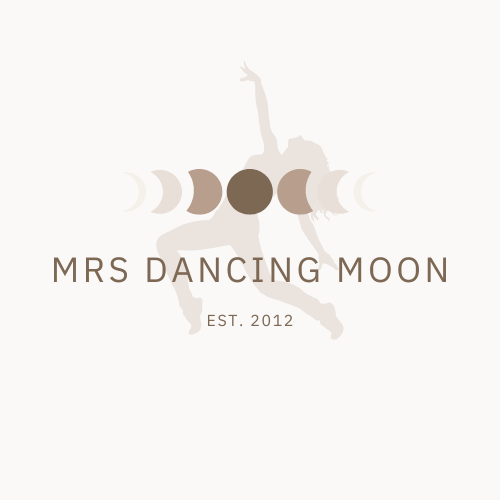What Is A Sexual Wellness Coach?
Read moreIncontinence and the Pelvic Floor Post Baby
I was inspired to write about incontinence today as this cool chill in the air has me sneezing. I recall a bit of uncontrollable leakage of urine every time I sneezed and coughed post babies. Although I was the only one who knew it was happening, I remember feeling a bit embarrassed that my urine got away from me!! It was obvious that my pelvic floor muscles had weakened, or more accurately, no longer supported my urethral sphincter as it had previously.
I know I am not alone in my experiences of urinary stress incontinence (too much intra-abdominal pressure on the pelvic floor). Kegels can be the answer for you, but if you're experiencing pain when performing kegels or not utilizing all of the muscles involved in the pelvic floor, this may not be your answer.
Let's clarify. Kegels are an exercise for the pelvic floor muscles- this includes 3 muscular layers as the parts 'down there' are all so closely connected and interwoven. The pelvic floor muscles intersect at the perineum (the area of skin between the anus and the vagina). This means that kegels involve more than the vaginal walls. It also involves the sphincters of the anus and the urethra. So if performing kegels, one must be mindful to work from the intersection- utilizing the muscles surrounding the anus, vagina, AND urethra.
Many of us may already be aware that we can perform kegels virtually anywhere, anytime. I prefer elevator kegels that lift higher with each 'floor' then reversely, lower/release with each floor, particularly in a low squat position. If this position is troublesome for your knees, one option is to roll up a towel or small blanket and place behind the kneecaps. If your heels disengage from the floor, feel free to fold up a yoga mat, blanket, or towel to place under your heels. Remember to keep the feet no wider than a 45 degree angle.
Other simple exercises to re-engage the pelvic floor are pelvic breathing and chair squats with a block.
Pelvic breathing is truly all in the name. I prefer this exercise seated upright in either a cross legged position or while sitting on a physio (yoga) ball. Think of breathing into the bowl of your pelvis, feeling a gentle expansion or downward press at the root and also noticing a slight space between the sitz bones on the inhale.
Lastly, the chair squats with a block can be seen in the photos below. Some cues for this exercise are to stand with your feet hip distance apart, gently squeeze the block between your upper thighs to engage the adductor muscles which in turn helps engage the transverse abdominals and even pelvic floor. Neck long, shoulder blades hugging the back, and ribs hugging the front of the body. Remember to breath and keep the spine long and neutral. Arrive in this position and then return to standing with the arms down at your sides. Repeat a few times taking notice of what you feel moving and engaging in your own body.
Chair squat with block
Chair squat with block, side view
Each of these exercises can be done with 1 minute of time or if you have more to dedicate, then so be it! The more you practice visualizing and intentionally working the pelvic floor, the better you will become. Be gentle and patient with yourself as you've just had a baby! Your body has transformed and needs to now re-learn some of what it knew before. It is a process and urinary incontinence will not go away over night. Again, patience and persistence is key. You are not alone! I've been there and I'm sure many other postpartum women are right there with you!
For additional support, feel free to join our Facebook group HERE.
Essential Oil of the Day!
If you don't know yet, know you do. I'm an essential oil geek. So I'm committed to sharing essential oil wisdom with you all. As with everything in life, including the exercises shared above, healing takes place on a small, micro level and takes time and consistency for results to be seen.
Today I'd like to share about a Young Living Essential Oil blend called Release. This oil holds a frequency of 102 mega hertz (MHz), and can be used specifically to release emotions of anger and frustration. For me, this ability to release memory trauma from the cells of my liver where negative emotions are stored is so powerful on my own healing journey. I'm committed to not being my traumatic events and situations in my past as they are NOT ME. I am a higher, elevated individual that learns and grows from my experiences.
Some oils contained in Release are:
- Ylang Ylang: balances male/female energies to help focus thoughts and bring feelings of self-love, confidence, joy, and peace
- Lavandin: anti fungal, antibacterial, strong antiseptic, and tissue regenerator
- Geranium: helps with hormonal balance, liver and kidney functions and the discharge of toxins from the liver. Opens the solar plexus. May help foster peace, well-being and hope.
- Sandalwood: increases amount of oxygen around the pineal and pituitary glands, helping improve one's attitude. Alleviates depression, assists in the removal of negative programming from the cells of the body.
- Olive Oil
Release can be applied directly over the liver, or as a compress over the liver, on the reflexology points of the foot associated with the liver, as well as worn on the body as if applying perfume. And it's absolutely YUMMY!!!
For more info on oils click HERE.
Thank you for reading. If you feel anyone you know would enjoy or could benefit from this information, please feel free to share the love!
I offer birth and postpartum doula services, life and sexual wellness coaching for the postpartum woman, and group and private dance lessons.
Happy holidays to you and yours!!!




